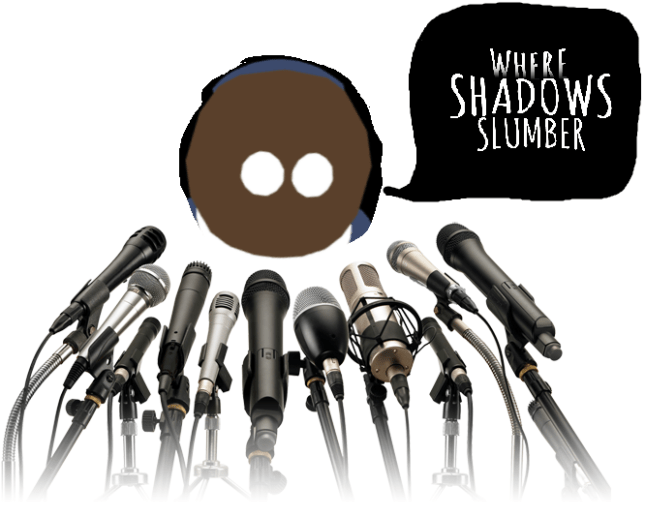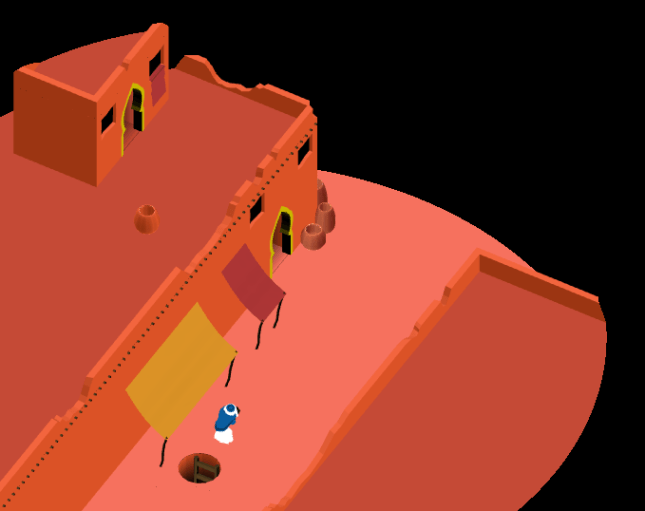We’ve been waiting a few weeks to announce this, but now it’s official: Where Shadows Slumber will have professional audio designed by Alba S. Torremocha and Noah Kellman. Please extend them a warm welcome to the team!
It would be a shame if I spent this entire announcement post blathering on instead of handing the spotlight over to them, so instead I’ll let them write their own introductions. Take it away, you two!
Hey all!
“Here we are! Finally! The last pieces of the Dream Team, reaaaaady to rock! And roll. Mostly roll, since we’re recording A LOT.
Everybody knows that sound guys are always the coolest, but let us introduce ourselves
real quick so there’s no doubt left about it.

Alba was expelled from Hogwarts for using her wand as a baton.
Alba S. Torremocha (Music & Sound Design) Alba comes from a highly-refined background in classical composition and orchestration. She walks around with an eyebrow raised because well, that’s what snobby classical musicians do. She studied violin for 10 years and then Classical Composition and Conducting in Europe for 4 years, with a strong focus on French orchestration techniques (hence the raised eyebrow). In the US, she won the residency of the NYU Symphony in 2016, and recently received the Elmer Bernstein Award. Her pieces have been premiered and awarded around the world, and she always makes sure everyone is aware of this at all times. Her alter ego appears under the full moon and is a kick-ass film and video game music composer. She recently collaborated with the renowned video game composer Tom Salta (Prince of Persia, Halo, Killer Instinct…) on one of his latest projects. More: www.albastorremocha.com

Noah spits fairy dust when he’s excited. No one knows exactly why.
Noah Kellman (Sound Design & Music) Noah comes from an intensive jazz piano background. He toured the country at the Brubeck Institute while working with many jazz greats along the way. He spent year after year striving to be the best until someone finally said to him, “Your music sounds terrible and I don’t understand any of it, so it must be the best jazz I’ve ever heard!” At that point, Noah knew he was a true jazz master and he decided to pursue becoming a master of other things, including filling his medicine pouch in Horizon Zero Dawn and driving with cruise control set to 11 mph collecting rare Pokémon in NYC. But, in his glorious return to professional sound creation, Noah began creating electronic cinematic soundscapes using acoustic instruments to create strangely familiar yet unrecognizable timbres. Although he works intensively as a composer and sound designer throughout the film and game world, his pride, joy, and utter financial downfall is his independent Cinematic Post-Rock project “Nozart”, which has also garnered him attention as a songwriter, producer and performer in the Indie world. More: www.noahkellman.com
We often work as a team because, as you can see, we come from very different backgrounds and, when we combine them, really cool stuff happens. Also, it’s more fun to have someone else to blame and panic with when the deadline hits your face. We first heard about Where Shadows Slumber at Play NYC. We played it and were instantly amazed, but we quickly noticed there was no music or sound design.
When we asked them about it, they said: *slo-mo, camera closeup on their lips*
‘We’re looking for a Sound Team.’

(Actual footage of the moment)
Then, a choir of angels appeared and bonded us to this sacred quest. Next thing we know, we’re recording lantern sounds in our living room.
We knew right away that Where Shadows Slumber called for an exceptionally unique sonic landscape. After discussing this in great detail with Frank and Jack, we understood that Obe’s story takes place in a world that bears some nostalgic resemblance to ours, but is actually full of creatures, inhabitants and landscapes of mysterious origin. We wanted our sounds to be surprising, alien, and yet somehow recognizable. We tried to accomplice that goal by using unconventional methods to reflect familiar creatures and landscapes. For example, in the following video of World 0, we used a combination of synthesis and acoustic flutes to create the birds throughout the atmosphere. The two types of birds function differently within the game, bringing the soundscape to life.
We also wanted to break the barrier between music and sound design. Instead of an
inanimate loop that plays over and over, we created a soundscape in which both music
and sound design breath together, affecting and changing with each other as the player makes decisions in the game. For example, different layers of music are activated (or deactivated) with the player’s progress (or backtracking) in solving the puzzle throughout the level.
Overall, Where Shadow Slumber is an exciting challenge, and we love nothing more
than helping transport the player into a completely new, beautiful and immersive world.”
-Alba & Noah
Look Forward To More Audio Updates
Jack and I are thrilled that we’re able to bring Alba and Noah aboard! Our game has been a silent vacuum for quite some time, and it gets a bit soul-crushing. Hearing the birds chirping in the Forest for the first time suddenly made the game feel alive in a way that it hasn’t since the Demo days. It really is incredible how one missing crucial piece, like the sense of sound, can cripple the experience.
Well, no longer! Look forward to more audio updates as time goes on. We’re all working on different sections of the game right now; Alba and Noah are making their way chronologically though the Worlds starting from the Forest, as Jack finishes up the game’s ending Levels and I’m somewhere in the middle doing artwork. In time, we’ll converge and show our fan(s) the combined effort of everyone’s talents working together. Until then, you’ll have to be patient!
EDIT (Sept. 26, 3:00 p.m.): A previous version of this article mistakenly contained the wrong video file showcasing the game’s audio. The video has been updated.
= = = = = = = = = = = = = = = = = = = = = = = = = = = = = = = = = = = =
More audio updates are coming in the next few months. Until then, you can find out more about our game at WhereShadowsSlumber.com, ask us on Twitter (@GameRevenant), Facebook, itch.io, or Twitch, and feel free to email us directly at contact@GameRevenant.com.













